Sure, you can roll out some sod and call it good. But why not spruce things up, add a bit of color and texture to your landscape, and make your yard more attractive to pollinators with a walkable ground cover?
Also called stepables (or steppables), walkable ground covers are exactly that: wide-spreading, low-growing plants that can withstand foot traffic from humans and animals.
They make an excellent natural mulch that help reduce erosion, conserve moisture, and crowd out weeds. Instead of using wood chips, pea gravel, or bark to fill in the empty spaces in your landscaping, you can plant low-maintenance ground covers in your garden paths, between your pavers, or anyplace you’d put turf grass.
Walkable ground covers are much easier to maintain than a lawn (say goodbye to tedious tasks like edging and weeding!) and because they tend to stop growing once they reach a certain height, you almost never have to mow them.
Depending on what you’re after and how much patience you have, you can purchase ground covers in pots or plug trays, or start them from seed. (I list my favorite online sources below.)
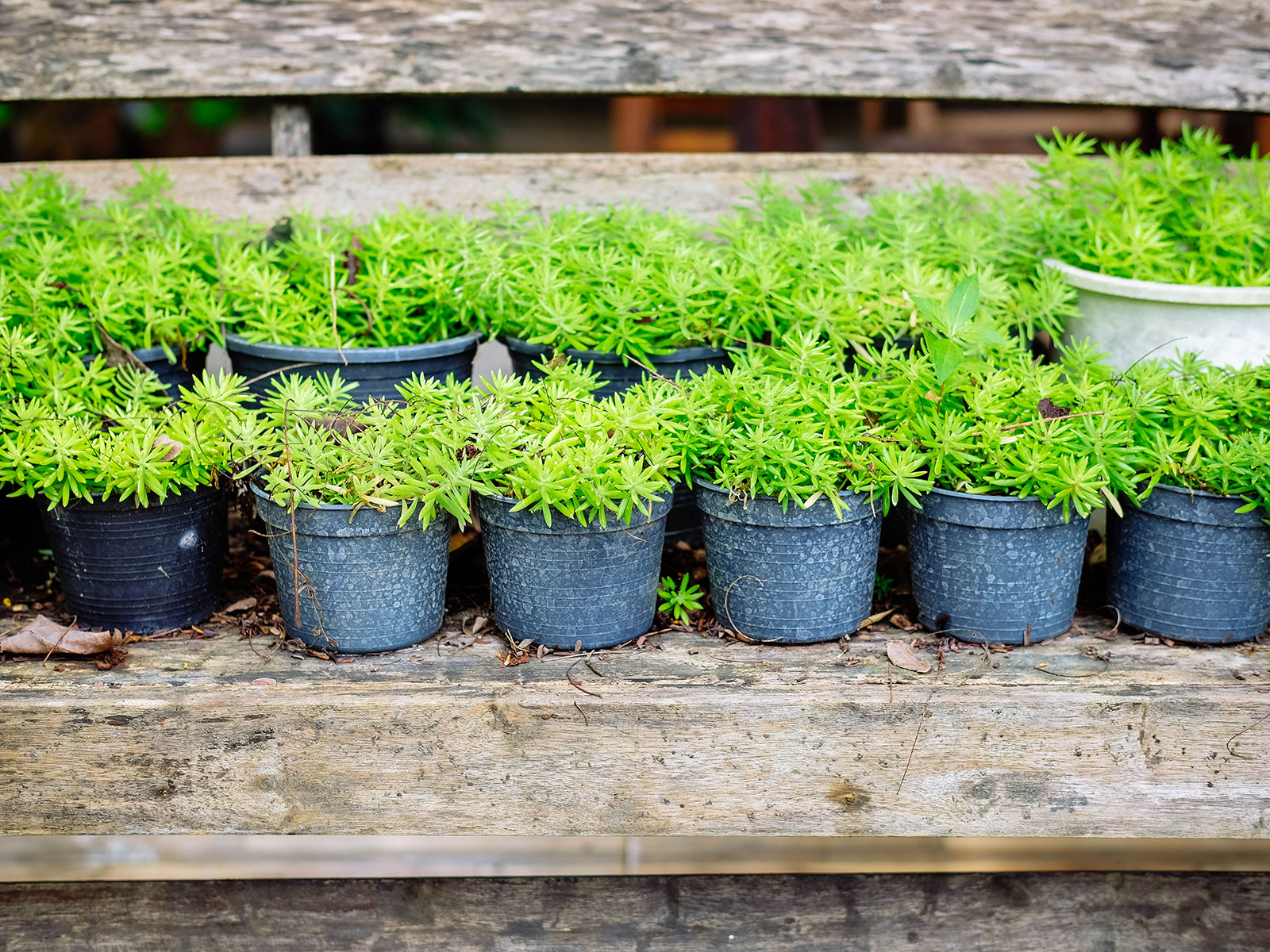
Here’s what I recommend if you’re looking for a steppable ground cover that will come back year after year (or even stay green all winter, depending on your climate).
Disclosure: If you shop from my article or make a purchase through one of my links, I may receive commissions on some of the products I recommend.
Miniclover

Also called microclover, this low-maintenance perennial ground cover is a cultivar (Trifolium repens var. ‘Pirouette’ and ‘Pipolina’) of regular white clover. It’s similar to regular clover in that it functions as a nitrogen fixer (yay for healthier soil!) and it’s even a ground cover you can eat—though you’ll want to let it keep growing, as miniclover is one of the best alternatives to turf grass.
So what makes it so good? For one thing, it’s drought-tolerant and will stay green when other lawns start to brown. It only grows 3 to 6 inches tall so it requires zero mowing (though if you mow it, miniclover will form smaller leaves and maintain its miniature growth habit through summer). It also doesn’t need any fertilizer and spreads densely into a soft and cushiony ground cover.
You can seed miniclover by itself or mix it with other low-water grass seeds to create an eco lawn that delights with blooms in late spring to early summer.
Recommended for: Zones 3 through 8
Sedum
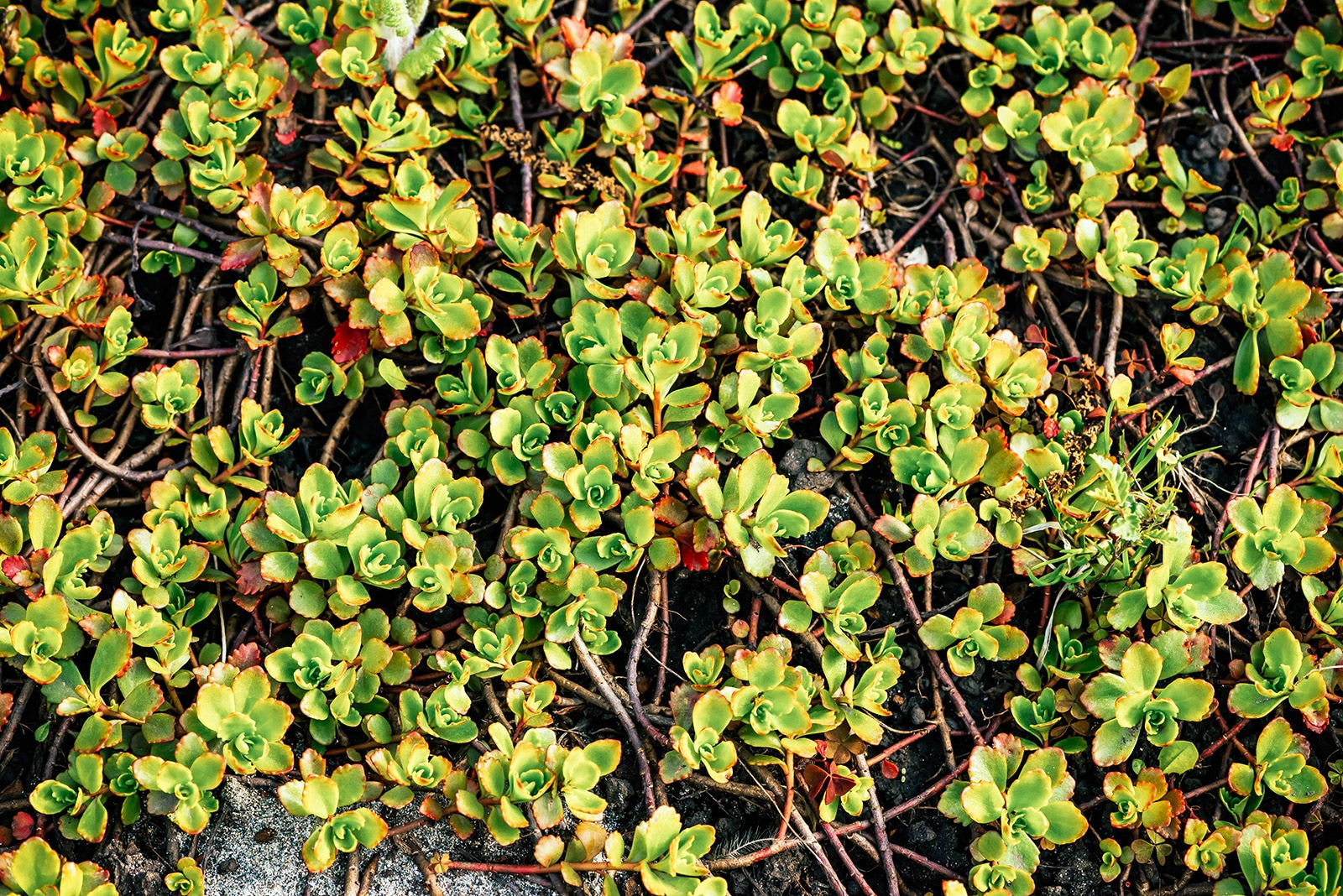
Sedum (Crassulaceae, also called stonecrop) is found primarily in the Northern Hemisphere, as well as in Africa and South America. It thrives in full sun and can withstand heat as well as drought, making it perfect for warmer climates and yards with direct sunlight all day.
More importantly, sedum is tough. It’s an evergreen ground cover that can handle being walked over (especially by boisterous dogs and kids) and doesn’t require a lot of maintenance.
The plants come in many different varieties featuring all shapes and sizes, and if you’re not going for a specific color scheme, I recommend a sedum mat like this one (which blends several types of stonecrops for a layered look).
Recommended for: Zones 3 through 9
Corsican mint
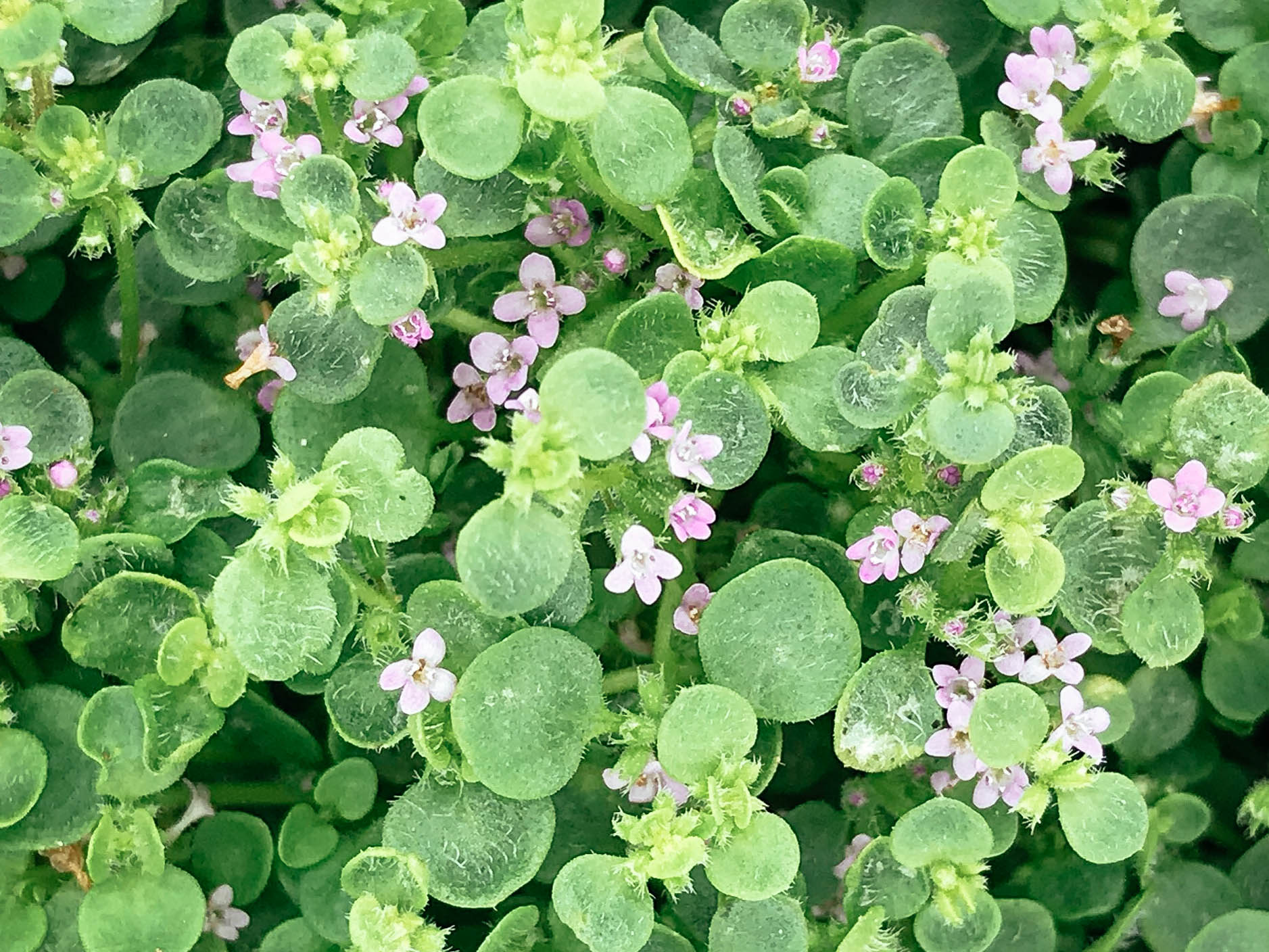
Native to Corsica, France, Italy, and Sardinia, Corsican mint (Mentha requienii) is a vigorous grower that self-seeds and spreads by rhizomes, making it invasive in warmer climates like the Southeast United States (though it’s not as aggressive as other types of culinary mint).
This invasiveness, however, is what makes it such an effective ground cover: Corsican mint can really move to quickly cover an area!
And with every step you take on this deliciously fragrant ground cover, you’ll get a whiff of a lovely minty scent (which may help repel garden pests like deer).
Corsican mint thrives in full sun and doesn’t mind some shade in peak summer. When it flowers, the plant produces beautiful little lilac blooms that add a pop of color to all that green. It’ll struggle a bit in a drought, so be sure to adequately water during these periods. Other than that, this walkable ground cover requires little other maintenance.
Recommended for: Zones 6 through 9
Silver carpet lamb’s ear

An excellent low-water grass alternative is silver carpet lamb’s ear (Stachys byzantina). Native to South Africa, it’s a distinctive, dense ground cover that grows into a very low mat (up to 4 inches tall).
Talk about easy—silver carpet’s lamb ear isn’t picky about where you plant it. It thrives in poor soil and dry shade but also loves the sun. It needs only light watering until established and after that it’s very drought-tolerant, making it a great option for hot, arid climates. The fuzzy, silvery leaves are also unpalatable to deer and rabbits.
Silver carpet can withstand moderate foot traffic and its gray-green foliage provides a perfect neutral backdrop for all your other landscaping plants.
Recommended for: Zones 9 through 11
Creeping Jenny

If you’re looking for a bright burst of color, creeping Jenny plants (Lysimachia nummularia) produce gorgeous golden leaves! Often referred to as moneywort due to its golden coin appearance, creeping Jenny appears to cover your yard in a beautiful yellow carpet.
It loves full sun and can tolerate light shade. Though this ground cover can thrive with very little maintenance, it does need to be lightly watered from time to time if there’s a drought.
I love this ground cover because during the spring months, it produces cheery yellow blooms that attract pollinators. It can also take a lot of foot traffic, so it’s great for busy yards.
Recommended for: Zones 3 through 8
Beach strawberry

Native to North America, beach strawberry (Fragaria chiloensis, aka coast strawberry or sand strawberry) creates a lovely evergreen carpet of green foliage.
This is another walkable ground cover that thrives in full sun to light shade and tolerates moderate foot traffic. It grows a little taller than some of the other plants on this list, sometimes reaching as tall as 6 inches with runners reaching about the same length.
It’s a beautiful plant year-round and I particularly love it as a border where it gently cascades over stones and walls. But the real draw? It’s also an everbearing strawberry type—that means in spring, it sends up pretty white flowers that give way to edible red berries in summer.
Recommended for: Zones 4 through 9
Woolly thyme and creeping thyme
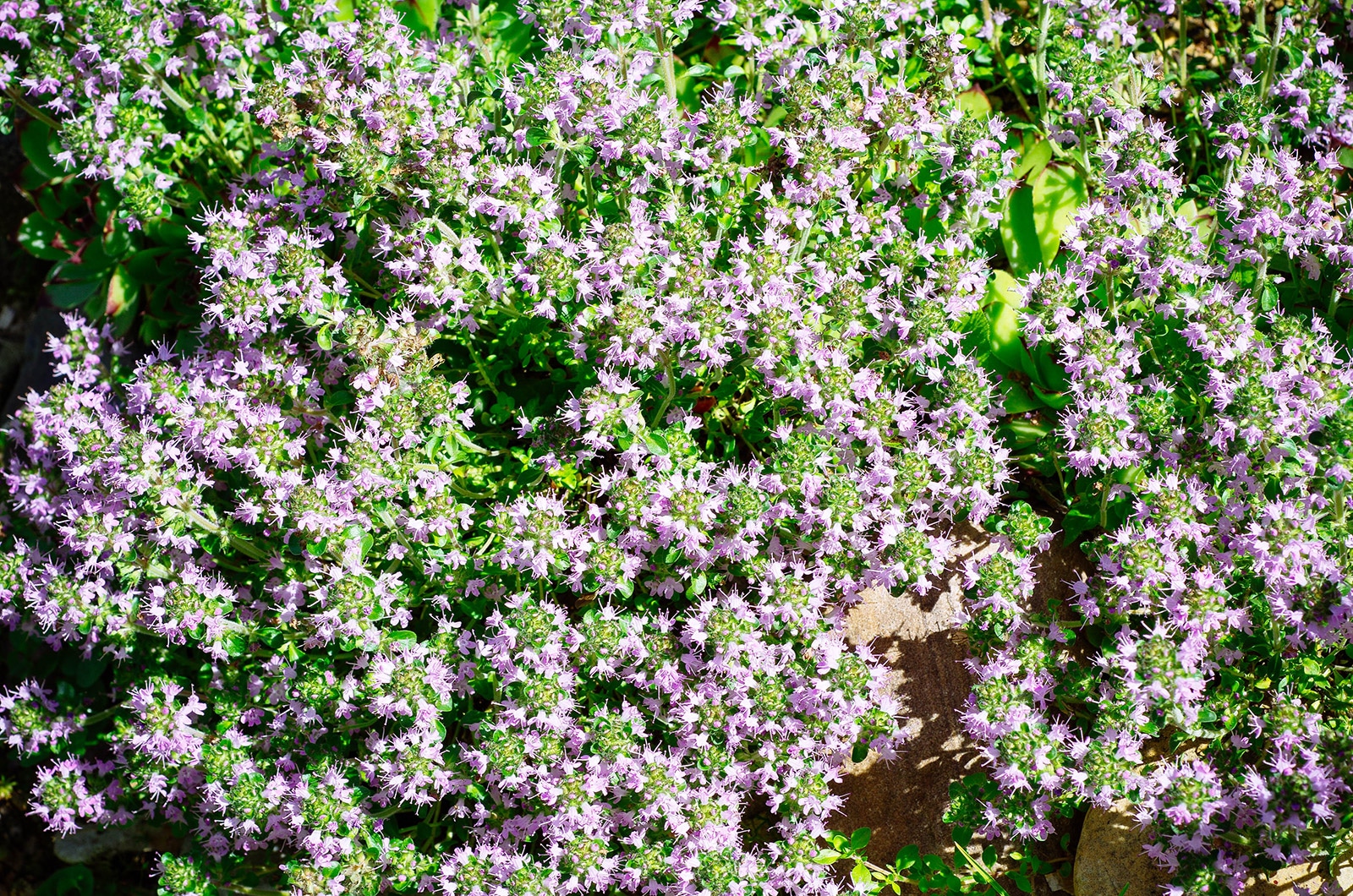
For a wonderfully fragrant yard, consider planting woolly thyme or creeping thyme (Thymus serpyllum). Both plants like direct sunlight and require very little care. They quickly spread to form a soft, fragrant carpet over the soil, and they’re two of the best perennials you can grow for pollinators.
Woolly thyme has fuzzy leaves and stems and blooms beautiful pink flowers that bees absolutely love!
Creeping thyme produces stunning purple flowers in summer and gives off a delicious herbal scent, especially when walked on or brushed against.
Both of these varieties of thyme are known for their resilience as stepable ground covers, and the best part is, you can even use these tasty herbs in your cooking! (Obviously, only harvest the stems that do not get walked over.)
Recommended for: Zones 5 through 9
Mazus
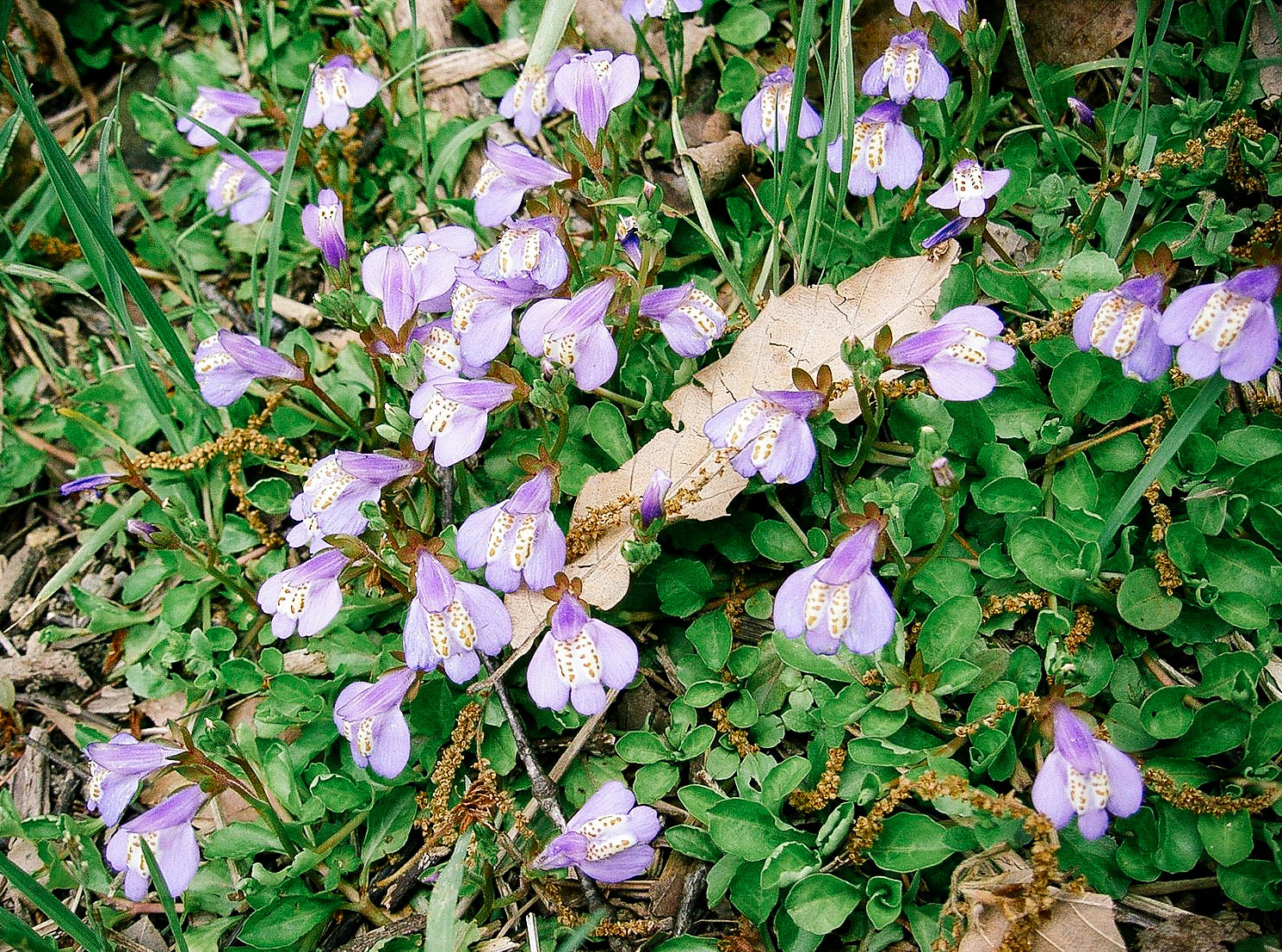
Mazus (Mazaceae, sometimes called creeping mazus) is a fast-growing, semi-evergreen ground cover that maxes out at 3 to 4 inches tall. It likes full sun to partial shade and tolerates light foot traffic.
Once established, it spreads to form a dense mat of foliages with tiny orchid-like lavender flowers in late spring and summer. It makes a beautiful ground cover for bulbs and pairs well with daffodils, since it’s also deer-resistant.
Mazus thrives in warmer climates, but is fairly versatile in that it can handle a wide variety of weather conditions. If you’re on the low end of its hardiness range, I recommend planting mazus in a more protected area to ensure it comes back after winter.
Recommended for: Zones 5 through 9
Snow-in-summer

Indigenous to Western Asia and Europe, snow-in-summer (Cerastium tomentosum) is a short-lived perennial growing up to 6 inches tall. It prefers sun and grows best in well-drained soil.
This pretty plant definitely lives up to its name. During the summer months it bursts in a profusion of dainty white flowers that look like fat snowflakes against the silvery foliage.
Snow-in-summer spreads quickly to fill a space and even cascades over walls, making it a beautiful choice for borders. It prefers cooler temperatures and is very cold-hardy, so it’s ideal for northern climates.
Recommended for: Zones 3 through 7
This post updated from an article that originally appeared on September 1, 2021.



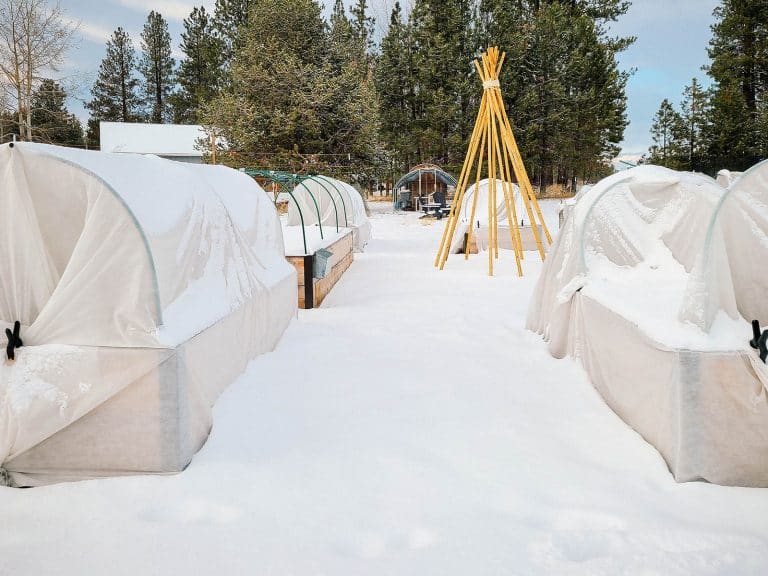

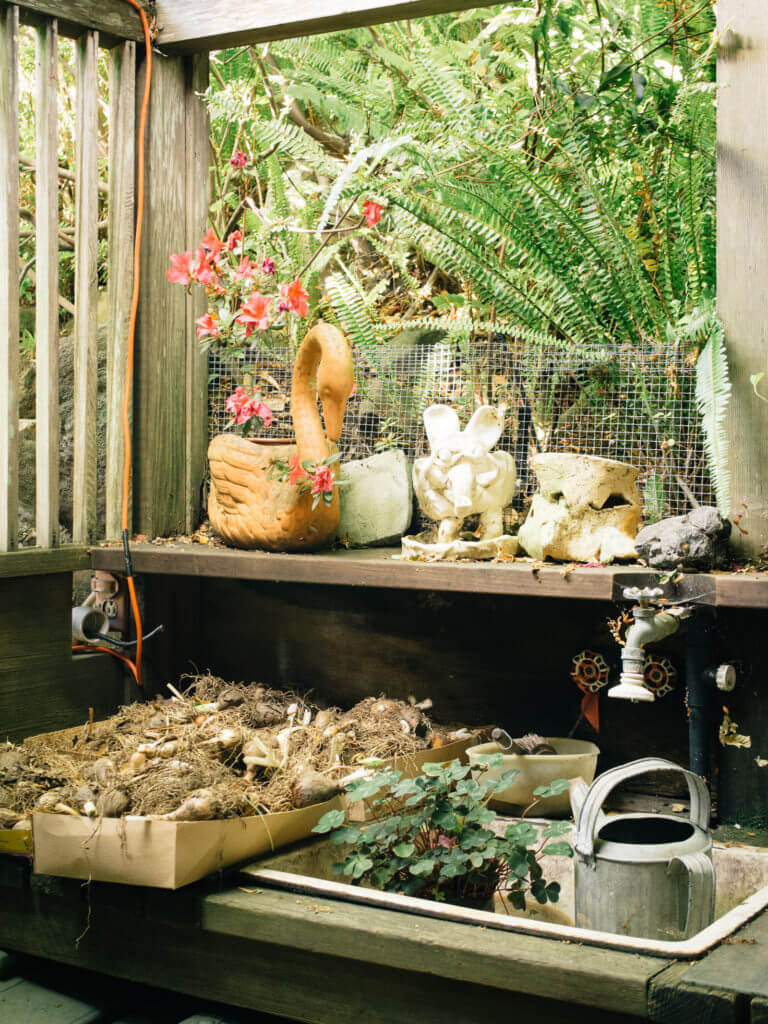
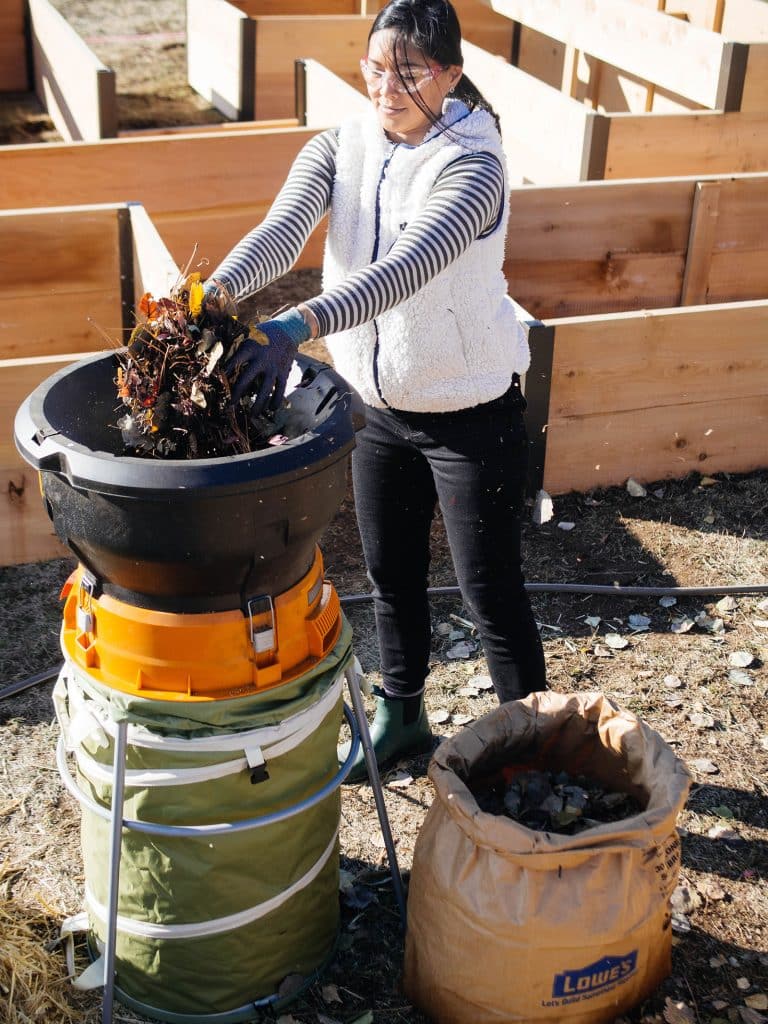
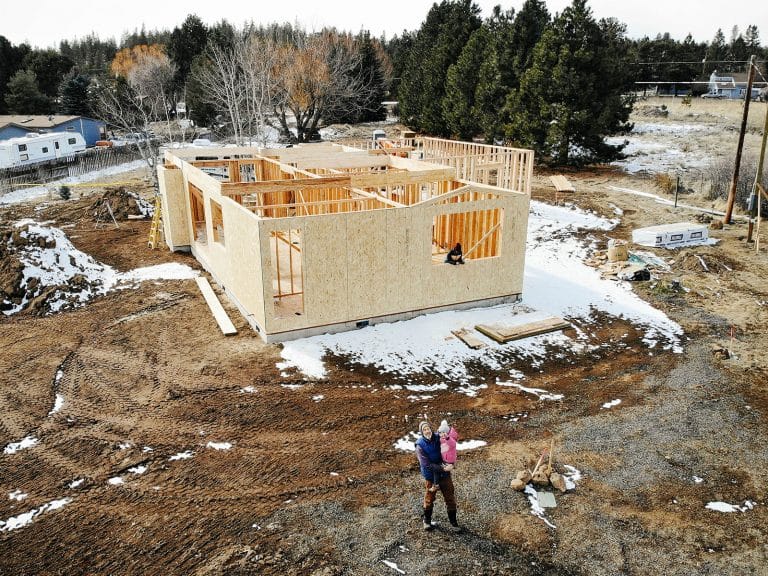

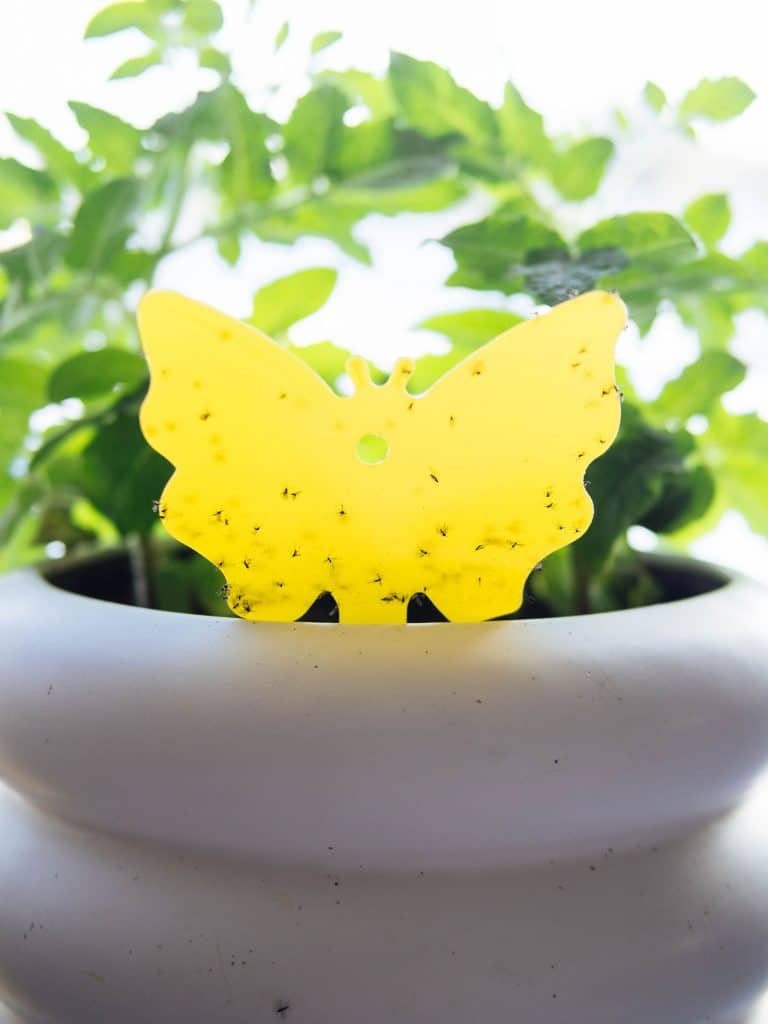

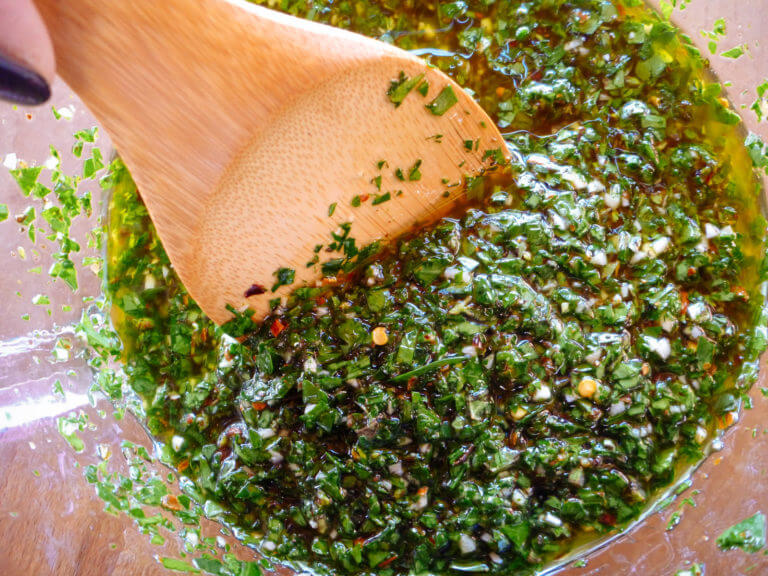


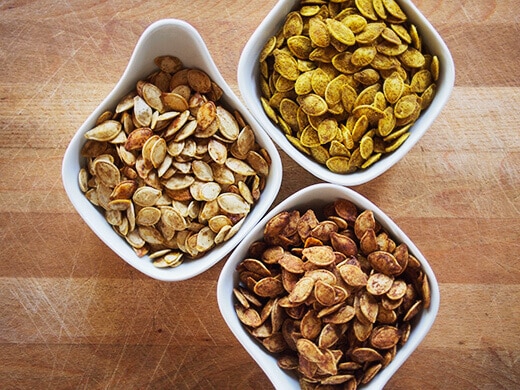

I’m not sure if you will accept a question or not, but if so my question is the name of & a location where I can obtain a start of an indoor hanging plant I had years ago, but cannot find now. At the time I was told it was a miniature wandering Jew, but cannot find it by that name or anything else I have tried. It had tiny green heart shaped leaves probably about 1/2 to 3/4 inch length. The leaves were a thick waxy or glassy look. They did not like direct sunlight. It never really flowered, but once in a while it would have little spokes that weren’t pretty, but would last a little while & then die off. I would love to have a start of that plant again.
Hi Linda – I live in Maupin, OR and am in need of a ground cover for the edge of our lawn that you can walk on. Our front lawn slopes down to the street and we do not have a fence. I was wondering IF a ground cover could make for an EDGE type effect? Our lawn is beautiful however, at the end by the street it turns to dirt and goat heads:-( Thank you for your expert opinion……..Vicki Manous
Linda, please talk about ground ivy (creeping Charlie). I will never get rid of mine. Are there any benefits?
Linda, which steppables are barefeet friendly? Guessing mini clover is. Also, do any form vines or runners that would be a tripping hazard?
Make sure whatever you plant is not invasive. Creeping jenny is considered invasive where I live.
Our backyard is covered with bark and continuously dropping pine needles. I’m looking for a soft, drought resistant ground cover that can stand up against the pine needles and bark. What do you recommend please ? We are in Northen CA, Valley. Thank you!
Replacing Lawn grass with invasives is really not a good idea. I like that you had some from America, but the ones from other continents should not be planted and many States ban them. One really should not replace 1 non native (grass) with others.
Can you specify what will be good for letting other plants thrive with it? I have a lot of creeping Jenny and I’m worried it will stop other things from surviving…..:maybe better to plant things that are bigger already?? It does keep the weeds down but seems to keep other plant friends away as well that I want to grow.
Sorry, I just have to add my 2 cents. I have had Creeping Jenny in pots on the patio, and it has actually grown OUT of the pot, across the patio and under the siding on the house. I now rip out any streamers that seem to want to make a run for the border before they can get too far out of the pot. You could not pay me to put that plant in the ground. My neighbor has it in one sectioned off area of her yard, and it has become her life’s work to try and keep it from spreading all over the neighborhood (she won’t use chemicals).
We’re here in the Pacific NW, maybe it isn’t so hardy in other areas. Good luck! Mary
Hi Linda! What are your thoughts on clover when it comes to groundcovers for areas like garden paths? Thanks!
Clover is great! (And I really should add it to this list.) I prefer micro clover since it looks tidier than Dutch white clover, though it only tolerates light to moderate foot traffic.
Hi Linda!
I know someone that’s currently considering clover as ground cover between their raised beds! 😀 Some of these other plants sound like they might work, as well. Thank you!